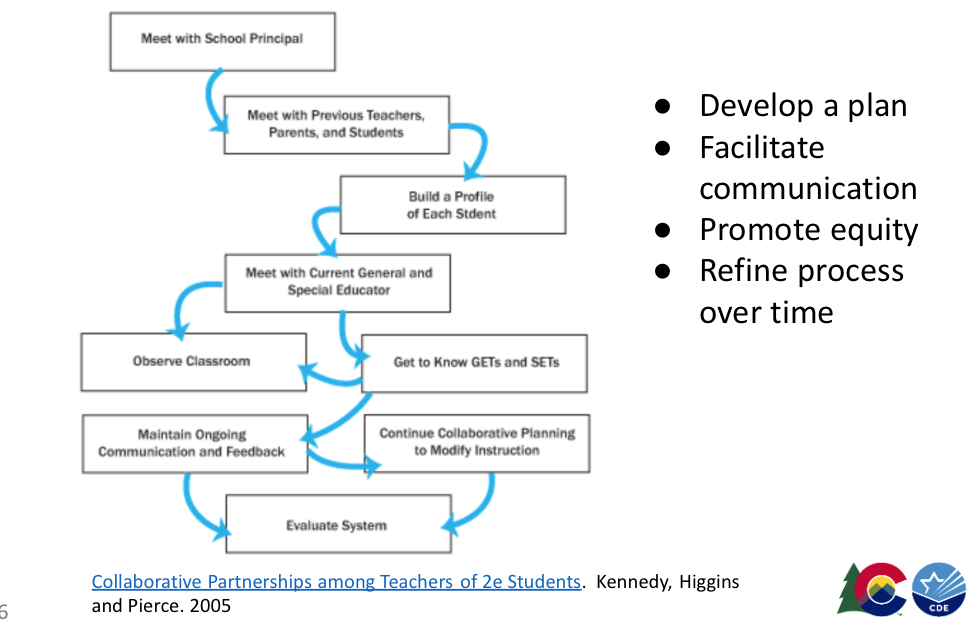Lesson 4: Looking Beyond the Academics
Designing A Process for Collaboration
Collaboration describes how teachers work together, not what they do. (Friend & Bursuck, 2002)
Key elements for general education, gifted and special education teachers working together:
-
-
Shared goal: success of 2e student both academically and emotionally
-
Partnership that evolves over time
-
Process not product
-
Team that supports one another to:
-
-
develop appropriate instructional plans
-
differentiate instruction
-
-
At the beginning of the school year:
-
-
Meet with all stakeholders involved with student both previously and currently to:
-
Review program goals set for the student
-
Emphasize that both exceptionalities must be addressed
-
-
Share the need for a collaborative process with principal to gain their support.
-
Meet with student and guardians to learn about their personal goals/expectations. Explain how collaborative process works.
-
Collaborative Partnerships among Teachers of 2e Students. Kennedy, Higgins and Pierce. 2005

Support the Classroom Teacher:
-
Learn about classroom structure, teaching styles, expectations
-
Provide suggestions to expand curriculum for students
-
Find appropriate materials
-
Work together to design and develop a differentiated curriculum
-
Provide support for modifications
-
Develop a schedule for collaborative planning
-
Collaborate on creation, implementation
-
Partner in evaluation of process using data gained from:
-
Direct observation in classrooms
-
Interviews of teachers, students and guardians
-
Samples of student work (process and product)
- Create a Student Profile:
- Create a Learning Profile
-
-
Put together a learning profile for the student with detailed notes on how they learn, both their weaknesses and their strengths, and update these as more information comes in from assessments.
-
The Student Study Form suggests data that will be helpful to best serve the student.
-
Adapted from “Supporting Twice Exceptional Students in the Classroom” by Amanda Drury, July, 2017